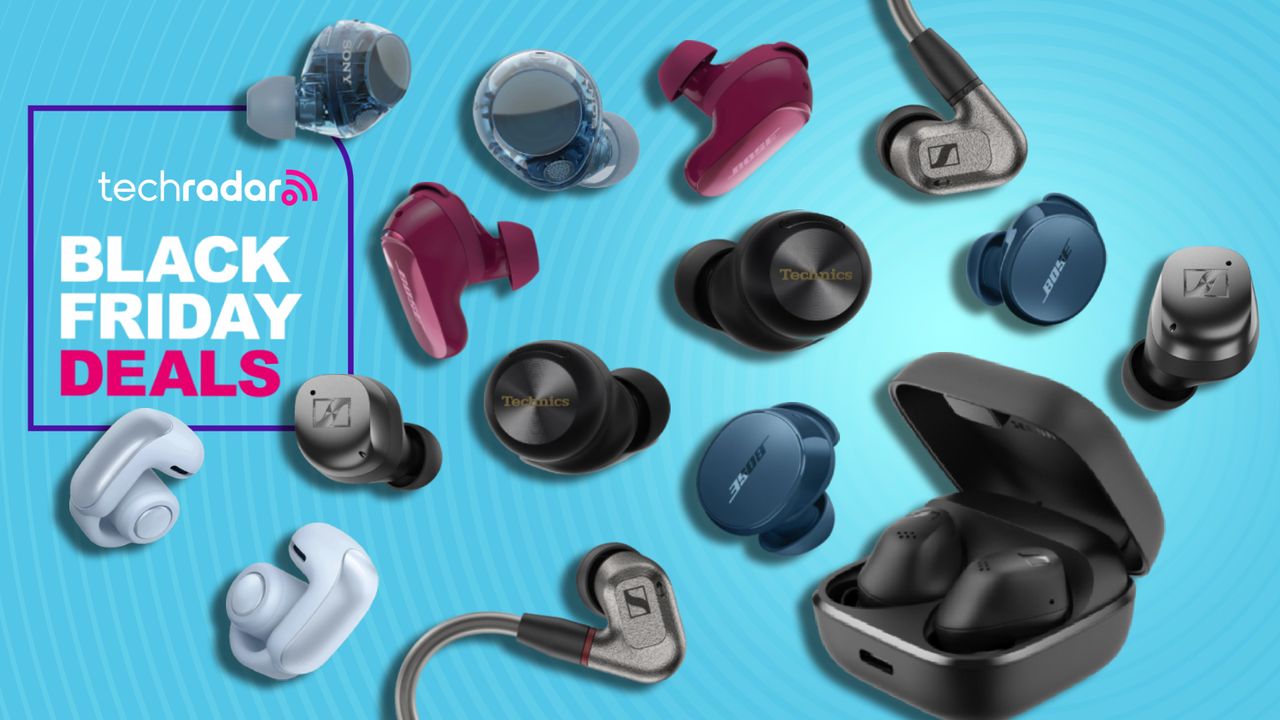I’ve never cared more about my sleep in my life than during the month-plus that I’ve worn the Oura Ring 4 Ceramic. Previously, if I woke up drowsy, I’d blame the past night’s bad choices and think, “Well, better luck tomorrow night!” Now, the first thing I do when I wake up is check my sleep score.
I’ve always been a person obsessed with tracking my body metrics, having become addicted to both my heart rate and my step count when fitness trackers first came out. But when sleep was added to the devices, I largely ignored it. All that data was starting to add up and feel like too much information to me. How could I possibly walk 10,000 steps in a day, get a perfect sleep score, and keep my heart rate down, my heart rate variability up, and my cardiovascular age lower than my actual age? I am literally just one person.
Oura Ring 4 Ceramic
If you want to track every biometric you can using available sensors, the Oura Ring 4 Ceramic does it best. But it still requires you to put in the work.
- Long battery life
- Extremely comfortable
- Lots of size options
- Very accurate tracking
- Probably tracks too much data
- Needs to be worn 24/7 to get detailed insights
Most fitness trackers these days try to do it all and, honestly, most of them fall short on that task. But surprisingly, when I tested the Ring 4 Ceramic, I stopped feeling bothered by all the data points. Yes, the Ring 4 Ceramic does cram every body metric possible into its tiny device and accompanying app. And yet, somehow, it does so in a way that I am at least a little bit less bothered about than I had been in the past.
I’ve also decided that of all the options currently out there to track my health—smartwatches, straps, etc.—a smart ring is by far superior.
The Oura Ring 4 Ceramic is going to cost you
The Oura Ring, which originally debuted exactly a decade ago after a successful Kickstarter campaign, is currently in its fourth iteration, which came out over the summer. In October, the company also debuted its ceramic version of the Oura 4, which is made up of high-performance zirconia ceramic, which is a material known for its durability and light weight. The new Oura Ring 4 Ceramic comes in four colors: Tide, Petal, Cloud, and Midnight.
A benefit of the Ring 4 Ceramic, according to Oura, is that the colors are part of the ceramic, and not an added extra layer like they had been with past metals. With older models, users had issues with the colors (a mix of silvers and golds) fading or chipping over time; ceramic has no such issues. And while I’m only going on my second month, my Tide-colored Oura is still just as vibrant as day one.
See Oura Ring 4 Ceramic at Amazon
The Oura Ring 4 Ceramic is currently priced at $500, which is on the pricier end for a health tracker. The regular Ring 4 is $350. Competing devices like the screenless Whoop 5.0 is an annual subscription that includes the band and starts at $200, the Samsung Galaxy Ring is $400, and the most decked-out Fitbit Sense 2 is $250.
You also need a subscription for the Oura Ring, which is $6 a month (you can also pay $70 upfront for the whole year). If you don’t want to pay that monthly fee, the smart ring still works and you will still get certain data, including sleep analysis, a readiness score, and an activity tracker. But if you want access to everything else, you’ll need to pay that monthly fee.
The most comfortable ring I’ve ever worn?
I’m not generally a big ring person, but I honestly found the Ring 4 Ceramic to be pleasantly snug and cozy on my finger. I often alternated between wearing it on my middle or index finger. For the best and most accurate results, Oura recommends the index finger mostly because it provides a snug fit, and generally, the company suggests avoiding fingers where the knuckle is wider than the base. In my experience, I found that if I wore it on my middle finger, I could more easily forget it was there, whereas if I wore it on my index finger, I tended to fidget with it.
Comfort is a huge component of health and fitness trackers, and it’s one that doesn’t get talked about enough when reviewing these products. If the goal is to wear them 24/7, then they have to be comfortable, and it’s worth trying on a bunch of different types—smartwatches, straps, smart rings—to figure out which one works for you and your lifestyle.
A single charge lasts for up to 8 days, according to the company. In testing, mine has lasted a full 7 days multiple times. It’s available in a wide variety of sizes—4 to 15—which is even more than the smart ring’s previous iteration.
The Ring 4 Ceramic comes with what the company calls “smart sensing,” which is essentially an algorithm where the smart ring optimizes its multiple sensors to use the one with the best signal at any given time.
Is there anything it can’t track?
The better question, honestly, is what can’t the smart ring track? The Oura Ring 4 Ceramic uses infrared LEDs to measure blood oxygen during sleep. It also uses photoplethysmogram (PPG) sensors, which detect changes in blood flow, to measure heart rate and heart rate variability as well as respiration rate (which is important for sleep tracking). Temperature sensors measure average body temperature and accelerometer sensors track movement and activity.
All of those sensors mean that the Ring 4 Ceramic has the ability to track a huge swath of data, but the key is how it spits all that out into a usable form.
The Ring 4 Ceramic provides a daily sleep score. It also breaks sleep down into smaller details like total sleep versus time in bed and gives you a sleep efficiency percentage, which is how much of your time in bed you actually spent sleeping. It knows when you are doomscrolling or tossing and turning with the Sunday scaries. The Ring 4 Ceramic takes all of this, along with your nighttime resting heart rate, and calculates a sleep score. Anything 85 and above is optimal, and I’m proud to announce to the entire internet that my highest score was 88. This is where health optimization can get somewhat addictive, and I’m absolutely prone to it.
The tracker also provides a daily “Readiness” score, which it calculates using an algorithm that takes into account your resting heart rate, heart rate variability, any significant body temperature fluctuations, as well as your respiratory rate and sleep. Again, anything 85 or higher is optimal, and I’ve been getting a lot of scores in the 90s, which makes me proud of my mind, body, and spirit, honestly.
It also provides a daily activity goal, which you can set yourself, and it’s nice to hit that goal each day. Though a daily activity goal is pretty standard across all trackers, Oura’s is really well presented.
Similar to its competitor Whoop, the Ring 4 also provides a daily stress analysis. It tells you how long your body was in high stress (which it detects based on shifts in your heart rate, heart rate variability, and your body temperature). It also shares a daily stress score by telling you if you were “stressed,” “engaged,” or “relaxed” that day.
It didn’t predict that I was getting sick, but it could tell I was sick
Luckily for you all, I tested the Oura Ring 4 Ceramic during the month of October and November, which is peak fall cold season. The smart ring has an algorithm built into it called the Symptom Radar, which essentially uses changes in skin temperature, respiratory rate, resting heart rate, and heart rate variability to detect if something is off in your system. Theoretically, the idea is that it could detect these changes early and predict that you are getting sick. You could then take it easy those days or maybe even sleep an extra hour or two that night.
I got a cold in mid-October, which honestly came on pretty suddenly. I babysat a friend’s kid on a Monday. She sneezed into my face multiple times (so cute) and then on Thursday morning, I woke up with that dreaded scratchy lump in my throat, which continued to get worse and then better over the course of that next week and a half. The Ring 4 Ceramic didn’t detect any shifts from my baseline on Tuesday or Wednesday, or even Thursday, when I woke up feeling off. But once my cold was full-blown, the app did note that both my body temperature and resting heart rate were elevated, and wanted to know what was up.
That cold was fairly mild, and came on quickly, so I do wonder if I had had something worse, like the flu or covid, if it would have detected it a bit earlier. I also wonder if I keep wearing the Ring 4 Ceramic for longer, would it get better at knowing what’s normal and what’s not for me?
Period tracking
I still think that the best period tracker is a pen and paper (or a dedicated note in your notes app). Oura’s new cycle insights and fertility feature, which was unveiled at the end of October by the company (I had been using it since the start of my testing in early October) requires 60 nights of data in order to make accurate predictions. In order to really assess whether it’s working well or not, I’d want to give the Ring 4 Ceramic another couple of months after that, too. So, it’s too soon to tell how well it works.
To predict your period, the tracker collects body temperature readings over a long period of time (two months or more) and uses that in addition to an algorithm to predict when your next cycle might arrive and when you might be ovulating.
How useful is the Oura Ring 4 Ceramic, really?
The Oura 4 Ceramic really can do it all, from tracking your sleep and your stress score to monitoring your period, your activity level, and your heart rate. There are also a slew of integrations that you can use with the Ring 4, including Headspace, Strava, Natural Cycles, and even Stelo, which is a continuous glucose monitor. Connecting it to the smart ring allows users to see their glucose levels in the Oura app, which shows how factors like meal choices, sleep, and activity impact their glucose levels. Oura’s newest partnership, as of late October, is with Quest Diagnostics, the blood testing company. For an additional yearly membership fee of $100, users can get a comprehensive blood panel, though it’s not available in every state.
However, like I’ve written about in the past when reviewing similar products such as the Whoop and Polar Loop, how much of this data is that useful?
After a month of use, I did become obsessed with my sleep score, but I am not sure if I actually became a better sleeper because of it. This is similarly true for tracking my activity and my strain score. I’ve been a health tracking user for years now, and I’ve found that the key question you have to ask yourself when deciding whether you want to spend a couple of hundred dollars or more on these devices is: what are you trying to get from these devices? Is it better sleep, less stress, increased energy and activity? These devices can do it all, to a degree, and perhaps Oura can do it the best, but it still comes down to how much work you are personally willing to put into making your health better.




